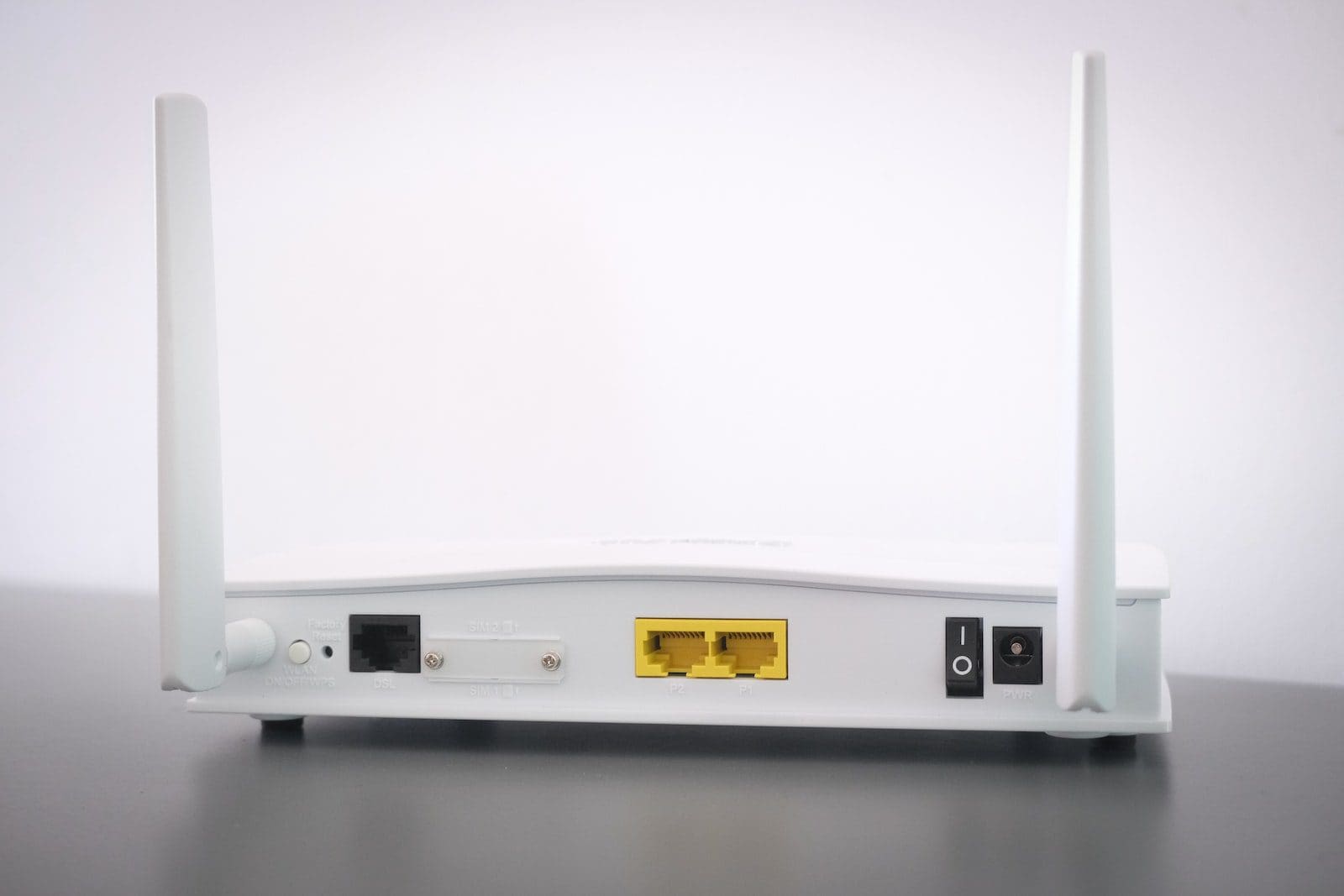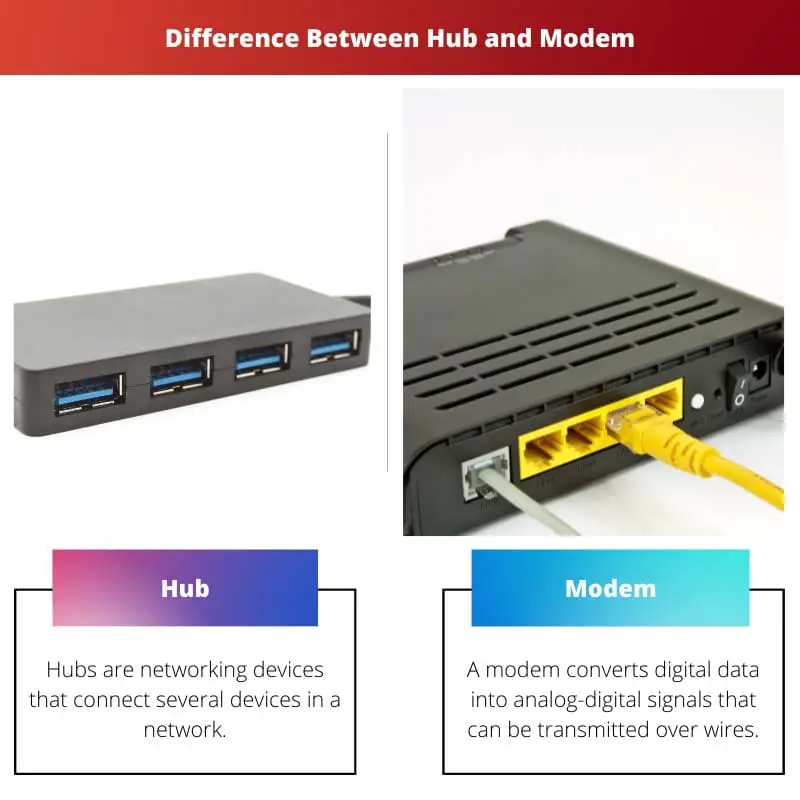We have complimentary equipment like hubs and modems in most modern houses, with two or more computers and Internet connections, which don’t communicate with but assist in maintaining the network.
Key Takeaways
- Hubs act as a central connection point for multiple devices on a network, while modems enable communication between devices and the internet.
- Modems convert analog signals to digital and vice versa, while hubs simply relay data between connected devices without signal conversion.
- Hubs don’t manage data traffic efficiently, potentially causing network congestion, whereas modems establish dedicated connections for smoother communication.
Hub vs Modem
A hub is a networking device that can be used to connect multiple devices in a network, like linking a network of personal computers. The modem is a device that converts digital data into analog-digital signals, which are then transmitted over wires. For instance, it connects a computer to the internet.

Hubs are networking devices used to link numerous devices in a network using a physical layer of the OSI architecture.
Put another way, it translates digital data from your computer into analog signals that can be transferred over cables, and it can also translate incoming analog signals into digital data that your computer can comprehend.
Comparison Table
| Parameters of Comparison | Hub | Modem |
|---|---|---|
| Definition | Hubs are networking devices that connect several devices in a network. | A modem converts digital data into analog-digital signals that can be transmitted over wires. |
| Usage | A hub can be used to link a network of personal computers. | A modem connects a computer or other instrument to the internet, for example to a router or to a switch. |
| Layer | The Physical Layer. | The Data Link Layer. |
| Transmission Mode | The transmission mode for a hub is Half Duplex. | The transmission mode for a Modem is Full Duplex. |
| Speed | The maximum speed of a Hub is 10Mbps. | The maximum speed of a Modem is 56.6Kbps. |
What is Hub?
A hub is a virtual networking device that connects a network’s numerous PCs or other network devices.
Hub is used to link LAN segments. If a packet reaches a single port, it gets duplicated to all other ports stored in the hub.
When the frame is received, it is transferred after amplification to the port of the target computer.

What is Modem?
A modem or “Modulator-Demodulator,” is a component of hardware that permits an Internet-based computer or another device like a router or switch.
The early modems were “wired,” thus, a telephone number needed to be dialled to connect to an ISP.
This period is in bits per second (bps). Another method to define modem speed is to count the number of times a modem sends a new signal in a given period as the number of times the signal state changes in a unit of time.

Main Differences Between Hub and Modem
- The transmission mode for a hub is Half Duplex, whereas the transmission mode of a Modem is Full Duplex.
- The maximum speed of a Hub is 10Mbps, whereas the maximum speed of a Router is 56.6Kbps.

- https://ieeexplore.ieee.org/abstract/document/7357439/
- https://ieeexplore.ieee.org/abstract/document/8784279/

This whole post is very illuminating. Everything is explained expertly with clarity, which makes it easier to understand the challenging subject. I’m so glad I came across this article.
A true masterpiece of information. I can’t thank the author enough for providing such well-explained details. This is a real value to the community.
I’ve learned a lot from this article. The side-by-side comparisons and detailed explanations give a full insight into the topic. Let’s have more of this.
Informative, educative and detailed. The article has done justice to explaining these topics. A great job indeed.
This article is a great read. Well researched and perfectly laid out. The topic is presented in a great way, making it easy to understand complex concepts. A thoroughly informative piece.
An enlightening read. It sheds light on the technical aspect of hubs and modems. Good thing there is a comparison table, it provides a quick, easy to understand summary.
Great information, it’s a detailed and well-structured deep dive. I can’t find anything lacking in this information.
Very interesting approach to the differences between hubs and modems and their uses. It is very detailed and clear enough to understand. It is a great entry point for anyone needing to learn about this subject.
Couldn’t agree more, the depth of information and clarity make it a real joy to read. This is a great contribution to the technology community.
I find it surprising that these details are not widely known. The comparison table and explanations provide an in-depth understanding of the differences between hub and modem.